
views
X
Research source
Provide a large tank and keep tiger barbs together in groups of six or more.
- Keep at least 6 tiger barbs in your tank since they're schooling fish and are less likely to be aggressive in a group.
- Get a tank that's at least 20-gallons for 6 tiger barbs.
- Tiger barbs prefer water between 70 and 78°F (21-26°C).
Creating the Right Environment
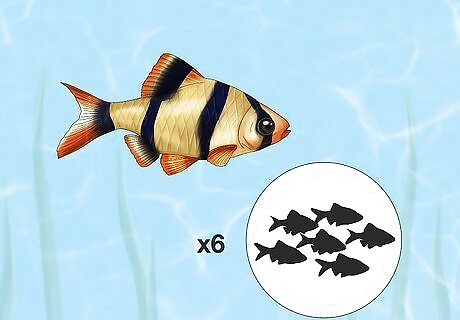
Get six or more tiger barbs. You need to house at least six tiger barbs together, as they are a schooling fish. They will become more aggressive to tankmates if you have a group of less than six.
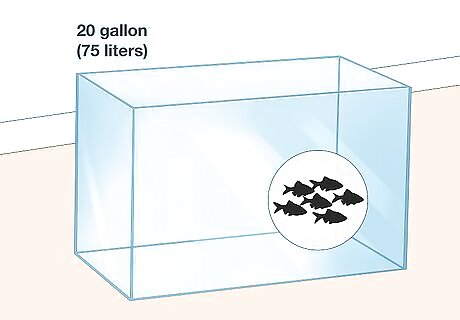
Choose a large aquarium. A 20 gallon aquarium (75 liters) is the minimum size for six tiger barbs. The larger the aquarium, the better, as tiger barbs enjoy open space to swim around in.

Put substrate on the bottom of the tank. A fine gravel or sandy substrate is ideal for tiger barbs. You can also add larger rocks to the tank to mimic their native habitat.
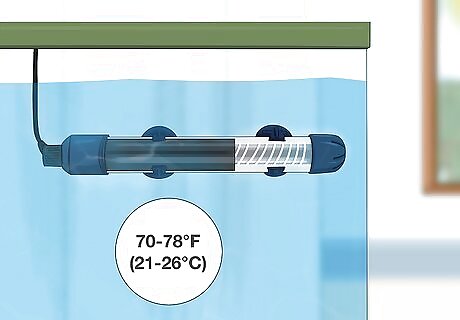
Add a heater. Since tiger barbs are tropical fish they should be kept in an aquarium with a temperature between 70-78°F (21-26°C). Install a tank heater to keep the temperature and a constant and comfortable level for your fish.

Install a filter. All aquariums require a filter, as decomposing organic matter, nitrates, and phosphates build up over time. Install a filter to ensure you have enough oxygen as well as clean water for your fish.
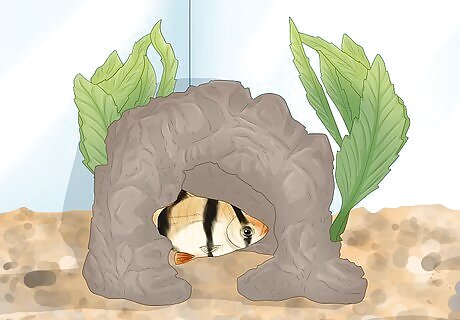
Provide hiding places for your fish. Driftwood makes excellent hiding places for tiger barbs, as do plants. Anubias and Javan fern are good plant choices for tiger barbs, but should be kept to the side of the tank to provide open space for swimming. To keep the driftwood from discoloring the water in your aquarium, completely submerge it a separate container of water for one to two weeks before placing it in the tank.
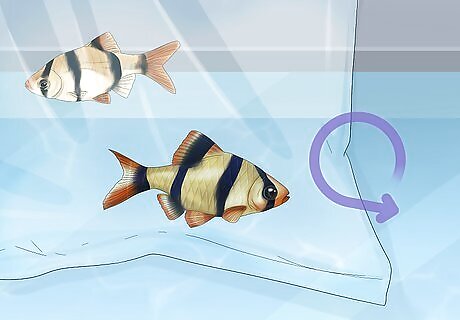
Acclimate the tiger barbs to the aquarium. Acclimation is a process which all fish need to go through. Acclimation helps the fish adapt to the aquarium water parameters without shocking their systems. Float the bag of tiger barbs in the tank for at least 15 minutes to allow the fish to adjust to the temperature. Cut open the bag just under the metal clip or knot and roll the top edge of the bag down 1 inch (2.54 cm). This will create an air pocket within the lip of the bag and enable the bag to float on the surface of the water Add 1/2 cup (118 ml) of aquarium water to the bag. Repeat this step every four minutes until the shipping bag is full. Use a net to remove the fish from the bag and release them into the aquarium. Remove the filled shipping bag from the aquarium and discard the water.
Caring for Tiger Barbs

Choose tank mates wisely. Tiger barbs are aggressive fish and are very notorious fin nippers! Bottom dwellers or larger fish without longer fins, such as Mollies, Platies, Bala sharks and Parrot cichlids, are likely to be successful in the same aquarium as tiger barbs. Avoid pairing tiger barbs with fish that have large fins or tails and those that are slow swimmers, such as long-fin Danio, betta fish, Angelfish, and other veiled fish.
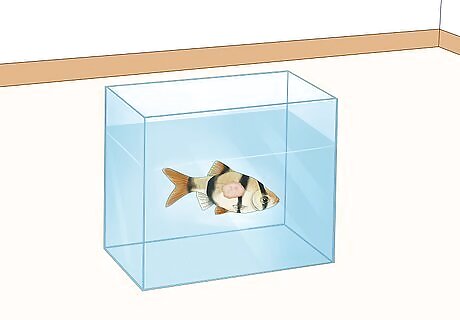
Quarantine injured tank mates. Tiger barbs are likely to attack wounded fish, as they establish a pecking order and exert their dominance in an aquarium. It’s best to remove injured fish from the tank and house them separately until they have healed.
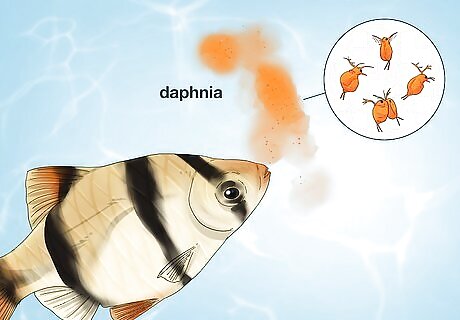
Feed your tiger barbs a mixed diet. Tiger barbs are omnivores, meaning they eat both animal and plant life. Tropical flakes, brine shrimp or other small crustaceans, daphnia, glass worms, and bloodworms are good options for your tiger barbs. Feed your tiger barbs twice a day if you can, or once a day if that's better for your schedule. Give your fish high-quality flake food every day. Treat them to bloodworms, brine shrimp, boiled lettuce or zucchini once a day as well. See how much your fish will eat in 3 minutes if feeding twice a day, or in 5 minutes, if feeding once a day, to give you an idea of the appropriate amount of food to feed them.
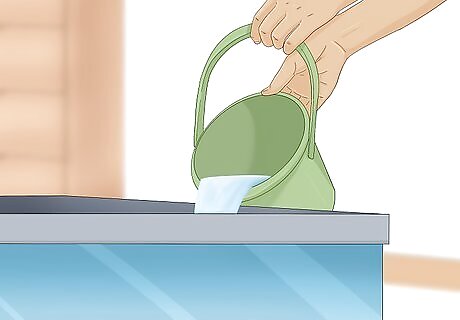
Add fresh water to the tank once a month. To keep the tank clean and the water at a high quality, replace 25 to 50% of the tank water with fresh water at least once a month. This will provide oxygen as well as remove nitrates and phosphates from the water.

Monitor the pH levels. For tiger barbs, the pH level of the water in the tank needs to stay between 6.0 and 7.0. To lower the pH, add driftwood to the aquarium or peat moss to the filter. To raise the pH, remove the fish from the tank and add 1 teaspoon of baking soda per 5 gallons of water. Always acclimate the fish to the new conditions before adding them back to the tank.
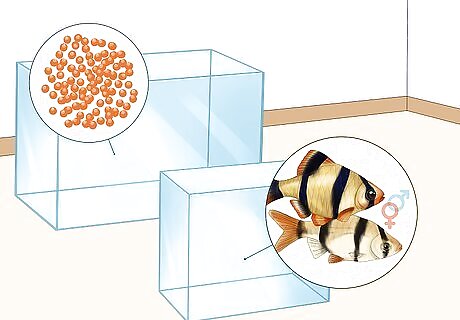
Breed tiger barbs in a separate tank. If you have several tiger barbs, they will pair up naturally. However, they do eat their own eggs, as well as the eggs of other fish, so it’s best to set up a separate tank for breeding. Introduce a pair of barbs to the breeding tank and allow them to spawn. Remove the adult fish after they have spawned to allow the eggs to hatch.




















Comments
0 comment